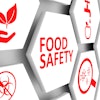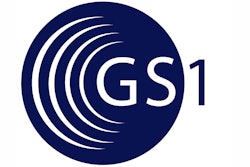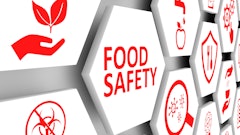
Here’s an update on the status of GS1 standards-based Item Alignment via the Global Data Synchronization Network (GDSN). A lot has changed in the last two years.
GS1 US has a new CEO, Bob Carpenter, who is devoted to the advancement of GS1’s core mission in the United States. I believe that having a senior executive who is fully committed to advancing the standards-based initiatives in the United States and improving commerce for GS1 community members is a good structural change.
Further, it is my opinion that GS1 has found a quality individual—experienced, hard-working and well-educated—to fill the organization’s most important leadership role.
I spent some time speaking with Carpenter, as well as some of his key executives. What I learned is detailed below.
Executive Vision
Carpenter has set five key areas of focus for GS1 US that he calls “The Focus Five”:
Community enablement: This includes better processes, tactics, and tools, including better analytics to bring companies “on board” with item alignment EPCglobal adoption, and other GS1 initiatives.
Sector focus: New organizations have been formed within GS1 US to advance adoption in the foodservice and healthcare industries.
Data quality: The effort here is to develop specific tools and practices, including a data quality scorecard, to enhance and improve the accuracy of product information related to the Global Trade Identification Numbers (GTINs) being transacted in the network. GS1 US is actively working with retailers in this area.
This focus helps bring about a smoother and more valuable adoption of the internal master data-management initiatives that are ongoing at so many companies.
Fresh food: This area involves not only bringing the standards-based initiatives of GS1 US efforts—found for so many years in “dry goods”—to meats and produce, but also providing meaningful initiatives to improve product safety and traceability.
Breakthrough projects: These initiatives are a bit more long-term. Carpenter has assigned an experienced GS1 US product executive to look toward the future and bring two key, broadly defined areas of interest to fruition:
- Visibility 2010: Use the power of RFID to show exactly where GTINs are in the supply chain for the Electronic Product Code (EPC) and the EPC Global Network. This has potentially huge value relative to product authenticity, supply-chain management, and product-recall consumer safety.
- B2C: Ensure the authenticity and accuracy of product information available to consumers through electronic channels. This includes things like being able to scan products in a store with a mobile device (e.g., cell phone, BlackBerry, iPhone, etc.) with a bar code reader-scanner and quickly see things like extensive nutrition, product content, and potentially competitive pricing information.
GDSN Adoption
Working for a leading vendor of GS1 Item Alignment solutions, I meet with many companies looking to improve their supply chain using GS1 standards. I sometimes hear comments like, “Oh, yeah, I remember that data sync thing. What happened to it?”
This section proves that the GS1 Item Alignment adoption, as communicated over the GDSN over both six and 2.5-year time horizons, is thriving.
Over nearly a six-year span, participating Global Location Numbers (GLNs) have increased from 137 to 23,574, and GDSN-registered GTINs have increased from 74,609 to 5,171,170. In the 30-month period of September 2007 to March 2010, the number of GLNs in the GDSN increased 67 percent, and the number of GTINs in the GDSN increased 173 percent.
There are now 28 GDSN Certified Data Pools around the world. The following table shows the current activities of eight of the most active data pools in the GDSN.
To put some context around growth in the use of the GDSN as the method of communicating items aligned using GDSN standards, I spoke with Susie McIntosh-Hinson of the GDSN Inc. division of GS1.
She provided this information:
- GDSN began with about 200 companies and six data pools in 2004. The landscape today shows many positive trends unfolding. The growth in GDSN adoption is being driven from several areas, which are expected to continue to drive exponential growth:
- Country penetration and expansion is growing. GDSN is now active in over 90 countries, with the number anticipated to continue to increase due to new regions implementing GDSN, as well as early adopters of GDSN focusing on both regional expansion and internal implementation of data quality and business process automation initiatives;
- Data pools within the network have grown from six to 28;
- Sectors have spanned well beyond CPG to include healthcare, hardlines (product lines primarily consisting of merchandise such as hardware, housewares, automotive, electronics, sporting goods, health and beauty aids, or toys, chemical ingredients, foodservice and support for mobile commerce trusted data);
- As multi-nationals expand to new regions, they can leverage the network to connect to their local/regional manufacturers or distributors.
With the big picture on GS1 US goals and initiatives defined, it was time to dig into the details. To learn what was going on, I spoke to the leaders of the key focus areas (i.e., The Focus Five) specified by GS1 US’ Carpenter.
Foodservice Objectives
Longtime GS1 US executive Dan Wilkinson is now in charge of helping the foodservice industry adopt GS1 standards. Wilkinson provided the following history, update and insight relative to this initiative:
In October 2009, 55 founding member companies came together to support the voluntary adoption and implementation of GS1 global standards by individual foodservice companies that wanted to achieve complete and accurate data with their trading partners. Here’s what they’re looking for:
- GS1 Location Identification: Global Location Number (GLN) for unique brand-owner identification;
- GS1 Product Identification: Global Trade Item Number (GTIN) for foodservice products to ensure unique identification of individual products;
- Baseline product information (product attributes): Aligned product information throughout the supply chain from manufacturer to distributor to operator—to include nutritional, allergens,and ingredient information;
- Access to standard product information through the GS1 Global Data Synchronization Network (GDSN).
Industry organizations and founding members of the Foodservice GS1 US Standards Initiative cite three main objectives and industry-wide benefits as a result of companies choosing to adopt and implement GS1 standards: - Drive waste out of the foodservice supply chain;
- Improve product information for customers;
- Establish a foundation for improving food safety and traceability.
Within the foodservice industry, GS1 standards have been endorsed by industry associations such as the International Foodservice Distributors Association (IFDA), the International Foodservice Manufacturers Association (IFMA) and the National Restaurant Association (NRA).
I was intrigued by the incredibly rapid advancement in the foodservice initiative, so I attended the NRA show in Chicago, May 24-25. GS1 held a special meeting for the foodservice initiative at the event, and it was quite an eye-opener. There were nearly 100 director and C-level executives on-site at the meetings, with 20 to 30 others joining by phone and online meetings. This was an incredible show of support in a very short period of time.
For more information about the foodservice initiative, distributors or operators can contact Lance Esposito at [email protected]. Manufacturers or brand owners can contact Julie McGill at [email protected].
Holzman is director of solution product sales, LANSA, Downers Grove, IL. Published by MC Press Online on September 13, 2010, and reprinted with permission of MC Press Online (www.mcpressonline.com).
Voice Is The Word
Based in Ocala, FL, Signature Brands LLC is a manufacturer of food decorating products. Its dessert decorating products are sold under the Cake Mate and Betty Crocker brand names while its seasonal items are sold under the PAAS Easter egg and Pumpkin Masters brand names.
The company employs up to 30 workers in its 80,000 square-foot distribution center, picking more than 53,000 cases of products per week.
The warehouse workers receive customer orders and assemble pallets stocked with their requests. Constructing these pallets is a delicate balancing act due to the types of products—if too many heavy products, like densely-packed seasonal shipper displays of icings and bottle decors, are placed on the top, the pallet will topple. If lighter, smaller items are placed on the bottom, like PAAS Easter Egg color kits, they could be crushed.
In the past, workers would receive a paper ticket order and then plot out their pallet picking strategy. This process took at least 10-15 minutes and slowed the process. To streamline and simplify its picking process, Signature Brands sought out a voice technology solution that could run in tandem with its new SAP enterprise resource planning system.
Signature Brands deployed Psion Teklogix’s Mobile Integration Suite (MIS) and from Vocollect Voice Inc. Psion Teklogix’s MIS enterprise-wide middleware solution integrates Signature Brands’ SAP ERP with Vocollect Voice. This system generates orders along with instructions on how to best build each pallet. Vocollect Voice not only provides workers with a guideline, it also talks the workers through their daily task.
Meanwhile, Psion Teklogix’s Speech Process Analyzer Dashboard and Reporting Tool provides warehouse managers with an overview of productivity and operational metrics in real time, including the capability to generate historical reports. This allows managers to better organize their distribution warehouse resources.
As a result, Signature Brands realized these benefits:
- Labor hours reduced by 24 percent;
- Training time reduced from two weeks to two days;
- Pick and ship rates jumped from 150 cases per hour to 400-500 cases per hour;
- Inventory write-offs reduced by 75 percent.
“Because our business is seasonal, our shipping requirements vary tremendously month to month, and a large percentage of our orders are staged or shipped within a day, so responsiveness and accuracy are critical,” says Gary Stenzel, senior vice president of operations at Signature Brands. “Even before we had finished quantifying the cost savings obtained from deploying the Psion Teklogix and Vocollect products, we found that customer complaints had been greatly reduced. In my mind, that benefit alone is priceless.”



















